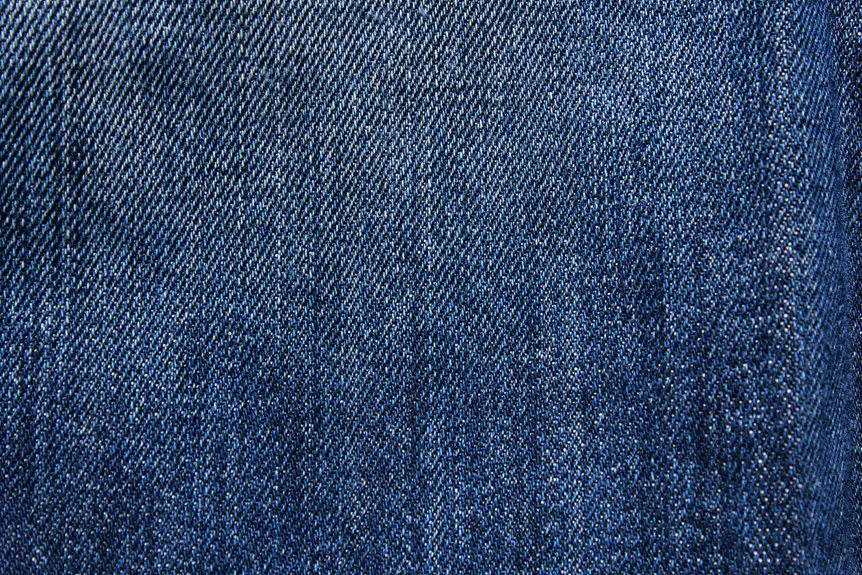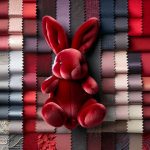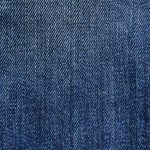You’ll find velour fabric soft and plush, with a short, dense pile that feels a bit like velvet but offers more stretch and comfort. It’s made by cutting loops on a knitted or woven base, giving it that smooth, velvety texture. Velour’s great for cozy clothing like tracksuits, as well as upholstery and curtains. If you want to understand how it differs from velvet or velveteen and explore its common uses and care tips, there’s plenty more to uncover.
Table of Contents
Key Takeaways
- Velour is a soft, plush fabric with a dense, short pile similar to velvet but stretchier and more casual.
- It is made by cutting loops on a knitted or woven base fabric, then shearing for uniform smoothness.
- Common types include cotton, polyester, spandex blends, and silk blends, each offering different softness and durability.
- Velour is widely used in casual wear, activewear, upholstery, curtains, and children’s clothing due to its comfort and style.
- Compared to velvet and velveteen, velour is stretchier, softer, and better for casual or flexible garments.
Definition and Origin of Velour
Although you might associate velour with luxury, it’s actually a type of fabric characterized by its soft, plush texture and short, dense pile. When you touch velour, you feel its smoothness and richness, making it popular for clothing and upholstery.
Velour originated from velvet, sharing a similar look but differing in how it’s made and its stretchiness. You’ll find velour mostly in casual wear like tracksuits and loungewear because it’s comfortable and flexible.
Its roots trace back to textile traditions in Europe, where craftsmen sought to create fabrics that combined elegance with comfort. So, when you choose velour, you’re picking a fabric steeped in history but designed for everyday luxury and ease.
How Velour Fabric Is Made
When you look closely at velour fabric, you’ll notice its distinctive plush texture comes from a unique manufacturing process. Velour is typically made from cotton, polyester, or a blend, and involves weaving or knitting techniques that create a dense pile.
Here’s how the process unfolds:
- The fabric base is first knitted or woven, often as a jersey or warp-knit.
- Loops are formed on the surface, similar to terry cloth.
- These loops are then carefully cut to produce an even pile.
- The fabric undergoes shearing to guarantee uniform length and smoothness.
- Finally, it’s dyed and finished to enhance softness and durability.
This precise method gives velour its characteristic softness and depth, making it distinct among plush textiles.
Characteristics and Texture of Velour
You’ll notice velour’s softness and plush feel right away, making it incredibly comfortable to touch.
Its surface has a subtle sheen that catches the light, adding a rich depth to the fabric.
The dense pile gives velour its signature texture, combining luxury with durability.
Softness and Plush Feel
Velour wraps you in a cloud of softness that instantly invites touch. When you run your fingers across its surface, you feel a gentle, velvety texture that’s both comforting and luxurious.
This plush fabric offers a unique tactile experience you won’t find in ordinary textiles. Its softness comes from densely packed fibers that create a thick, cushiony feel, making it perfect for cozy garments and upholstery.
You’ll appreciate how velour balances durability with a gentle hand.
- Smooth, velvety touch that soothes the skin
- Dense fiber construction for a plush feel
- Cushion-like softness that adds comfort
- Gentle warmth without heaviness
- Durable yet tender texture that holds shape
Velour’s softness truly elevates everyday comfort.
Surface Sheen and Pile
A subtle, lustrous sheen defines velour’s surface, catching light in a way that enhances its rich texture.
When you run your hand over velour, you’ll notice the dense pile—tiny loops or cut fibers—that give it that signature softness and depth. This pile varies in length but is generally short and evenly distributed, creating a smooth, velvety feel.
The surface sheen shifts as you move the fabric, producing a dynamic look that adds dimension to your garments or upholstery. Because of this reflective quality, velour can appear more vibrant and luxurious compared to flat fabrics.
When choosing velour, consider how the pile and sheen interact under lighting to guarantee it fits your style and environment perfectly.
Common Uses of Velour in Fashion and Home Decor
You’ll often find velour in cozy apparel like tracksuits and dresses because of its soft texture and stretch.
It also adds a touch of luxury to your home when used in upholstery, curtains, or cushions.
Let’s explore how velour fits into both fashion and interior design.
Velour in Apparel
Soft, plush fabrics like velour have become a favorite in both fashion and home decor for their luxurious feel and versatile style.
When it comes to apparel, velour offers comfort and elegance that you can easily wear every day or on special occasions. You’ll find velour used in:
- Tracksuits and loungewear for a cozy yet stylish look
- Dresses and skirts that drape beautifully with a soft sheen
- Jackets and blazers adding a touch of sophistication
- Hats and accessories that complement various outfits
- Children’s clothing, thanks to its softness and durability
Velour’s rich texture elevates your wardrobe while ensuring you stay comfortable.
Whether dressing up or relaxing, it provides both style and ease effortlessly.
Velour for Interiors
Although velour first gained popularity in fashion, it’s equally beloved in interior design for adding warmth and luxury to your living spaces. You can find velour on plush sofas, cozy armchairs, and decorative throw pillows, which instantly elevate a room’s comfort and style.
Its soft texture and rich appearance make it perfect for curtains and drapery, providing both elegance and sound insulation. When you choose velour upholstery, you’re investing in durability combined with a sumptuous feel that invites relaxation.
Plus, velour’s versatility means it complements both modern and traditional decor effortlessly. Whether you want to refresh your living room or create a cozy reading nook, incorporating velour fabric adds a touch of sophistication and tactile delight that you’ll appreciate every day.
Differences Between Velour and Similar Fabrics
When comparing velour to similar fabrics like velvet and velveteen, you’ll notice distinct differences in texture, weight, and stretch.
Velour is known for its plush, stretchy feel, making it ideal for comfortable clothing and upholstery. Velvet tends to be smoother and heavier, often used in formal wear.
Velveteen, meanwhile, has a shorter pile and less sheen, giving it a more matte appearance.
Here’s how they differ:
- Velour: Soft, stretchy, medium to heavy weight, plush pile
- Velvet: Smooth, less stretch, heavier, luxurious sheen
- Velveteen: Stiffer, shorter pile, matte finish
- Stretch: Present in velour, minimal or none in velvet and velveteen
- Use: Velour for casual wear; velvet for elegance; velveteen for structured garments
Understanding these distinctions helps you choose the perfect fabric for your project.
Caring for Velour Garments and Items
Knowing the differences between velour and similar fabrics helps you appreciate why velour requires special care.
When cleaning velour garments or items, always check the care label first. Most velour pieces recommend gentle hand washing or a delicate machine cycle with cold water to prevent damage. Avoid bleach or harsh detergents, as they can ruin the fabric’s texture and color.
After washing, don’t wring or twist your velour; instead, gently squeeze out excess water and lay it flat to dry. Steer clear of high heat when ironing; if needed, use a low setting with a pressing cloth.
Proper storage is essential too—hang velour garments to avoid crushing the pile, and keep them away from direct sunlight to prevent fading. Following these steps keeps your velour looking plush and fresh.
Popular Velour Fabric Variations and Blends
Since velour appeals for its softness and rich texture, you’ll find it in various fabric variations and blends designed to enhance its feel and durability.
When choosing velour, you can explore different types to suit your needs, whether for clothing, upholstery, or accessories. These variations balance comfort, strength, and appearance, so you get the best of velour’s characteristics.
Popular velour fabric variations and blends include:
- Cotton Velour: Soft, breathable, ideal for casual wear.
- Polyester Velour: Durable, wrinkle-resistant, with vibrant color retention.
- Spandex Blended Velour: Adds stretch for better fit and flexibility.
- Nylon-Polyester Blend: Enhances durability and moisture-wicking properties.
- Silk-Blend Velour: Offers a luxurious sheen and smoothness for upscale garments.
Understanding these helps you pick the perfect velour for your project.
Frequently Asked Questions
Is Velour Fabric Hypoallergenic?
You might wonder if velour fabric irritates your skin or causes allergies. Generally, it’s not hypoallergenic, but you can avoid reactions by choosing high-quality, natural fiber blends and washing it regularly to keep allergens away.
Can Velour Be Used for Upholstery?
Yes, you can use velour for upholstery because it’s soft and luxurious. However, keep in mind it might wear faster than sturdier fabrics, so it suits low-traffic areas or decorative pieces better than heavy-use furniture.
Does Velour Fabric Shrink After Washing?
Imagine your favorite sweater shrinking in a warm hug; velour fabric can shrink after washing if you don’t use cold water and gentle cycles. You’ll want to air-dry it to keep its soft, plush texture intact.
Is Velour Suitable for Summer Clothing?
Velour isn’t the best choice for summer since it traps heat and feels heavy. You’ll stay warmer in lighter, breathable fabrics like cotton or linen, which keep you cool and comfortable during hot weather.
How Does Velour Fabric Affect Body Temperature?
You might think velour traps heat uncomfortably, but it actually helps regulate body temperature by providing warmth without overheating. Its plush texture insulates well, making you feel cozy yet not excessively hot during wear.
- Tetron Fabric for Marine Applications: Durability and Use Cases - June 18, 2025
- Tetron Fabric for Outdoor Furniture: Weather Resistance and Care - June 18, 2025
- Tetron Fabric for Wall Coverings: Style and Application Tips - June 18, 2025







